NEWS AND INSIGHTS
Unraveling the Complexities of Bioplastic Drinking Straws
In an era marked by heightened environmental consciousness, the quest for sustainable alternatives to traditional plastics has gained unprecedented momentum. Bioplastics, including drinking straws, have emerged as a promising solution, touted for their biodegradability and eco-friendly credentials. However, a closer examination reveals a labyrinth of environmental challenges intricately woven into the fabric of bioplastic production and disposal.
History of Bioplastic Drinking Straws
The history of bioplastic drinking straws traces back to the early 20th century, marked by intermittent efforts to develop sustainable alternatives to conventional plastics. However, it wasn't until the late 20th and early 21st centuries that bioplastics gained significant traction as a potential solution to environmental concerns associated with traditional plastics.
In the 1990s, amidst growing awareness of plastic pollution and its impact on the environment, researchers and innovators began exploring biodegradable materials derived from renewable resources. This era saw the emergence of early bioplastic prototypes, often derived from plant-based polymers such as cornstarch or polylactic acid (PLA). These pioneering efforts laid the groundwork for the development of bioplastic drinking straws as a sustainable alternative to petroleum-based plastics.
The early 2000s witnessed a surge in interest and investment in bioplastics, driven by concerns over dwindling fossil fuel reserves and escalating plastic pollution. As consumer demand for eco-friendly products grew, manufacturers and entrepreneurs capitalized on this trend by introducing bioplastic drinking straws to the market. These straws, typically made from renewable resources like corn, potatoes, sugar beets, sugarcane, agave, as well as others. promised biodegradability and reduced environmental impact compared to their conventional counterparts.
Despite initial enthusiasm, the widespread adoption of bioplastic drinking straws faced challenges related to scalability, cost-effectiveness, and infrastructure limitations. While bioplastics offered a seemingly promising solution to plastic pollution, questions lingered regarding their true environmental benefits and long-term sustainability. Over the years, ongoing research, technological advancements, and policy initiatives have contributed to refining bioplastic formulations to improve their performance. However, many challenges remain and are discussed in this blog.
Types of BioPlastic Polymers & Drinking Straws
- PLA (Polylactic Acid)
- PHA (Polyhydroxyalkanoates)
- PBS
- PBAT
- Avocado
- Agave
- SugarCane
- Cellulose & Starch

Environmental Challenges of BioPlastic Drinking Straws
The term bioplastic encompasses a wide spectrum of materials, ranging from those derived from renewable resources to those synthesized from fossil fuels. This diversity often leads to misconceptions, with consumers assuming all bioplastics are inherently sustainable. Yet, the reality is more nuanced, with some bioplastics raising concerns over their environmental impact.
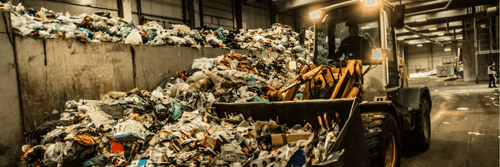
1. Compostability & End-of-Life Disposal Challenges
The term "bioplastic" encompasses a wide spectrum of materials, ranging from those derived from renewable resources to those synthesized from fossil fuels. This diversity often leads to misconceptions, with consumers assuming all bioplastics are inherently sustainable. Yet, the reality is more nuanced, with some bioplastics raising concerns over their environmental impact.
- Limited Composting Infrastructure: Industrial composting facilities, where bioplastic straws can decompose efficiently, are not universally available. This lack of infrastructure means that bioplastic straws often end up in landfills or recycling streams, where they do not biodegrade as intended. Equally troubling, an increasing amount of composting facilities don’t want or accept bioplastics because of the contamination they cause. According to the Sustainable Packaging Coalition (SPC), only 15% of existing composting facilities accept compostable bioplastics.
- Composting Conditions: Even in composting facilities, bioplastic straws require specific conditions to decompose effectively. Factors such as temperature, moisture levels, and microbial activity must be carefully controlled. If these conditions are not met, bioplastic straws may degrade slowly or incompletely, leading to environmental persistence.
- Home Composting Challenges: Many consumers assume that bioplastic straws can be composted in home compost bins. However, the decomposition process for bioplastics often requires higher temperatures and longer durations than typical backyard composting systems achieve. As a result, bioplastic straws may not break down as expected in home composting environments. Studies have found that the majority of bioplastics labeled as compostable do not actually break down in home compost systems
- Improper Disposal: When bioplastics are not discarded properly, they can contaminate batches of recycled plastic and harm recycling infrastructure. If bioplastic contaminates recycled PET (polyethylene terephthalate, the most common plastic, used for water and soda bottles), for example, the entire lot could be rejected and end up in a landfill.
- Mislabeling and Greenwashing: Some bioplastic straws may be labeled as "compostable" or "biodegradable" without specifying the necessary disposal conditions. This can lead to confusion among consumers and contribute to improper disposal practices. Additionally, greenwashing practices may exaggerate the environmental benefits of bioplastics, overlooking the complexities of their end-of-life management.
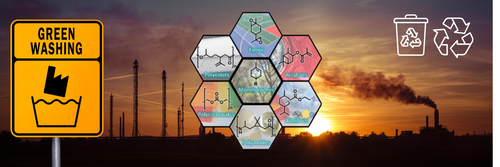
2. Composition of Unknown, Non-Biobased Raw Materials
The challenge of unknown raw materials used in the manufacturing process of bioplastic drinking straws pertains to the lack of transparency and clarity regarding the composition of these materials.
- Use of Non-Renewable Polymers / Undisclosed Additives: Despite being derived from renewable resources such as plant-based feedstocks, bioplastics in many cases still incorporate up to 75% petroleum-based polymers, synthetic additives, or chemical agents to improve durability, flexibility, or color stability. The use of non-renewable polymers and additives in bioplastic manufacturing can undermine the environmental benefits associated with bioplastics. According to a recent study, many bio-based plastics are inherently toxic, generate toxic byproducts during production, and/or contain toxic additives (Zimmermann et al., 2020). The same study found that commonly sold bioplastics contain more than 10,000 different chemicals, and up to 20,000 chemicals—hundreds of which are known to be toxic and are also commonly used in conventional, fossil fuel–based plastic
- Supply Chain Transparency: Addressing the challenge of unknown raw materials in bioplastic drinking straws requires greater transparency and accountability within the supply chain. Manufacturers should disclose the full list of ingredients and materials (currently not taking place) used in their bioplastic formulations, including any non-renewable polymers or additives. This transparency would enable consumers and businesses to make informed choices and encourage responsible sourcing and manufacturing practices.
- Lack of Regulatory Standards: Furthermore, regulatory frameworks and industry standards can play a crucial role in ensuring the sustainability and safety of bioplastic drinking straws. By establishing clear guidelines for bioplastic manufacturing and labeling, regulatory authorities can help minimize the use of non-renewable materials and promote the adoption of truly sustainable alternatives.

3. Agricultural Intensification and Land Use Change:
A significant portion of bioplastics is derived from agricultural feedstocks. While these crops offer a renewable resource for bioplastic production, their cultivation can contribute to environmental degradation through deforestation, habitat loss, and increased pesticide use. The interplay between bioplastics and agricultural practices underscores the complex dynamics shaping our environmental landscape. It’s widely believed that competition between bio-based plastic feedstocks and food crops for land could potentially drive up food costs (Popp et al., 2014).
- Deforestation and Habitat Loss: The cultivation of crops for bioplastic feedstocks often requires the conversion of natural ecosystems, such as forests or grasslands, into agricultural land. This process can lead to deforestation and habitat loss, disrupting biodiversity and threatening the survival of native species. To quantify the impact of this, a complete diversion of 250 million tonnes of plastic produced annually to bioplastics would require as much as 5% of all arable land.(Bishop et al., 2022).
- Increased Pesticide Use: The intensification of agriculture to meet the demand for bioplastic feedstocks may lead to increased pesticide and herbicide usage. These chemicals can have adverse effects on ecosystems, including soil degradation, water pollution, and harm to non-target organisms like pollinators and aquatic species. Moreover, the reliance on pesticides can contribute to the development of pesticide-resistant pests and the loss of natural pest control services provided by beneficial insects.
- Water Resource Depletion: Cultivating crops for bioplastic feedstocks requires significant amounts of water, particularly in regions with water scarcity or competing demands for irrigation. The extraction of water for agriculture can deplete aquifers, reduce streamflow, and degrade freshwater ecosystems. In areas where water resources are already stressed, the expansion of bioplastic feedstock cultivation may exacerbate water scarcity issues and lead to conflicts over water allocation.
- Soil Erosion and Degradation: Intensive agricultural practices, such as monoculture cultivation and mechanized farming, can contribute to soil erosion and degradation. Loss of topsoil, reduced soil fertility, and increased susceptibility to erosion are common consequences of unsustainable land management practices associated with bioplastic feedstock cultivation. Soil erosion not only affects agricultural productivity but also leads to sedimentation of water bodies, harming aquatic habitats and water quality.
- Climate Change Impacts: The expansion of agricultural land for bioplastic feedstock cultivation can release stored carbon into the atmosphere through deforestation and soil disturbance. Additionally, changes in land use patterns may alter regional climate dynamics, leading to shifts in precipitation patterns, temperature regimes, and ecosystem functions. These climate change impacts further exacerbate environmental challenges and threaten the sustainability of agricultural systems A recent study concluded that some bioplastics may contribute significantly to global warming, pollution, and drastic land use change
(Altiwesh et al., 2021).
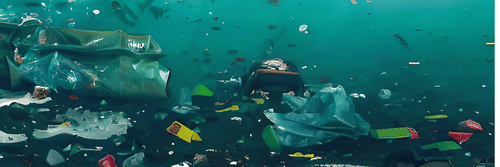
4. Marine Pollution and Ecological Fallout:
Plastic pollution poses a grave threat to marine ecosystems worldwide, with plastic straws ranking among the most prevalent items found in oceanic environments. While bioplastics may degrade more rapidly than traditional plastics under certain conditions, they still pose a risk to marine life
- Degradation into Microplastics: Bioplastic straws eventually degrade into microplastics when exposed to environmental conditions such as sunlight, water, and physical abrasion. These microplastics are small enough to be ingested by marine organisms, leading to bioaccumulation in the food chain and potential harm to aquatic ecosystems. According to a recent study published in the Ecotoxicology and Environmental Safety (Niu et al., 2024), while PLA releases less microplastics than traditional plastic, microplastics are still clearly being released and that remains a concern.
- Limited Biodegradability: While bioplastic straws are designed to biodegrade under specific conditions, such as industrial composting facilities, the marine environment may not provide the necessary conditions for rapid degradation. As a result, bioplastic straws may persist in marine environments for extended periods, contributing to marine pollution and ecological fallout (Royer et al., 2023).
- Habitat Alteration: Bioplastic straws can entangle marine organisms or alter their habitats. This can disrupt marine ecosystems, affecting species diversity, ecosystem function, and overall ecological balance. In fact, according to a study published in Science of the Total Environment (Hawke et al., 2023), biodegradable plastics are still harmful to fish,
- Chemical Leaching: Bioplastic straws may release chemicals or additives into the marine environment as they degrade, potentially contaminating seawater and impacting marine life. These chemicals could have adverse effects on aquatic organisms and contribute to ecological fallout in marine ecosystems.
- Fragmentation and Secondary Pollution: Bioplastic straws may fragment into smaller pieces over time, further exacerbating marine pollution. These fragments, similar to microplastics, can be ingested by marine organisms and spread throughout marine environments, leading to secondary pollution and ecological consequences.
5. Manufacturing Process, Carbon LifeCycle & Greenhouse Gas Emissions
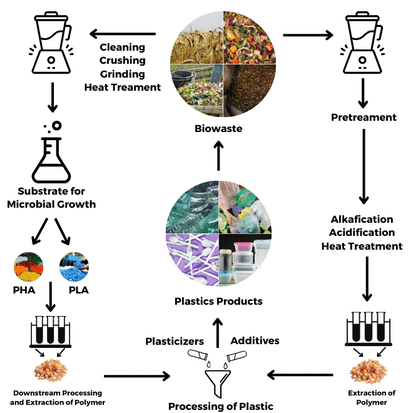
Contrary to popular belief, the production of bioplastics may not always result in lower emissions compared to traditional plastics. Factors such as land use change, energy consumption, and waste management practices play a pivotal role in determining the overall carbon footprint of bioplastic production. In fact, some life cycle analyses show that bio-based plastics can be just as harmful or even worse than conventional plastics when it comes to energy use, climate change, air pollution, and ecotoxicity (Walker et al., 2020),
- Raw Material Sourcing: The cultivation of crops for bioplastic feedstocks can result in greenhouse gas emissions from agricultural practices such as tilling, fertilization, and irrigation. Depending on the type of feedstock and agricultural practices used, the carbon footprint of bioplastic production may vary.
- Production Process: The manufacturing of bioplastic straws involves energy-intensive processes such as fermentation, polymerization, and extrusion. The use of fossil fuels or non-renewable energy sources during production can contribute to greenhouse gas emissions. Additionally, chemical additives, processing aids, and solvents may be used in bioplastic production, further increasing the carbon footprint.
- Transportation: The transportation of raw materials, intermediates, and finished products throughout the supply chain adds to the carbon footprint of bioplastic straws.
- End-of-Life Disposal: While bioplastic straws are designed to biodegrade under specific conditions, such as industrial composting facilities, their disposal in landfills or natural environments may result in slower degradation rates and methane emissions. Incineration of bioplastics for energy recovery can also release carbon dioxide and other pollutants into the atmosphere.
Better Straw Options?
If you’re looking for a better option than bioplastic, we recommend trying out our 100% plant-based wheat and reed stem drinking straws. They are grown naturally by mother earth and are home compostable which means they will break down in a reasonable amount of time. During this process, they return nutrients back to earth leaving no harmful residues behind. Furthermore, they have a low carbon life cycle and mitigate all challenges with bioplastic charges listed above. Our wheat and reed stem straws come in a variety of sizes for multiple drinking applications.
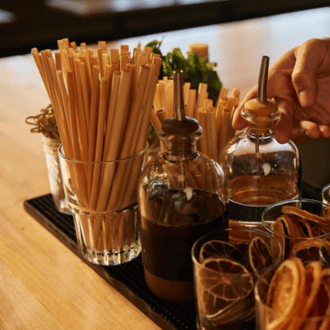
Certifications
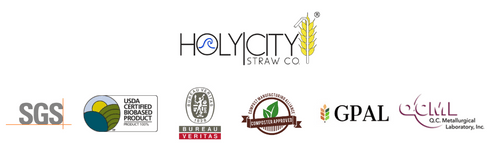
Our straws are certified compostable, safe and non-toxic, biobased and PFAS-free by the following entities:
- BioPreferred Program (USDA Biobased)
- Cedar Grove Composting and Compost Manufacturing Alliance (CMA)
- Food and Drug Administration (FDA)
- Société Générale de Surveillance (SGS)
- Verified PFAS Free (Q.C. Metallurgical Lab)
- Verified Gluten Free (GPAL)
Conclusion
In conclusion, while bioplastic drinking straws offer a glimmer of hope in the fight against plastic pollution, their journey towards sustainability is fraught with obstacles. From agricultural intensification and marine pollution to greenhouse gas emissions and infrastructure gaps, the environmental challenges associated with bioplastics underscore the need for holistic solutions.
